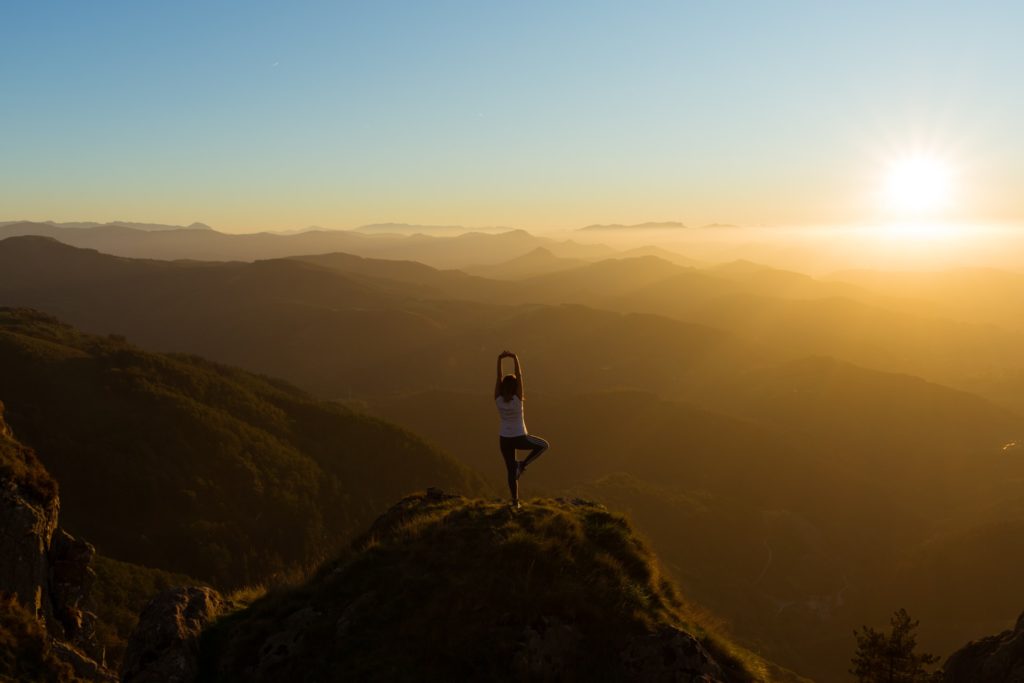As a former college athlete, my physical body has long been one of my most useful tools; a tool for improving athletic performance, increasing productivity. And a tool for pushing through when I felt like I couldn’t keep doing anymore.
Throughout my college years, I felt like I was in a perpetual state of pushing. Pushing myself to be a better athlete, pushing myself to achieve academically, and pushing myself to do all of the things I felt like I was “supposed” to do, but never actually made me feel good.
All tools eventually need a little maintenance to keep performing. While I was busy pushing and hammering away, I failed to notice that my foundation was crumbling. I was losing tiny fragments of myself along the way. It seemed like the farther I pushed myself the less capable I was of holding myself together.
The constant pushing was having a major impact on my body. I was asking too much of it without taking the time to ask what it needed from me in return. What did my body really need at the moment? I never slowed down long enough to listen to it. The more I demanded of my body, the more separated and detached from it I felt.
I had lost sight of myself as a whole. Seeing myself through an ego-invented illusion. This separation I felt only existed as a fabrication of my own mind. I wasn’t separate from my body at all, it was only my perception that made me believe I was.
Despite being a high-performance athlete, I was totally blind to the vast interconnectedness and untapped potential that already existed within me. I had no idea how much energy I already had at my disposal.

The Benefits of Yoga for Athletes: A Path to Wholeness
To tap into this energy, I needed new tools for refining my perception. I needed to turn my organs of perception inward and learn how to explore myself through a deeper, more conscious lens: lucky for me, I soon discovered the practice of yoga.
In Western culture, we think of “yoga” as the physical form or asana. It’s actually just a small piece of a holistic practice. However, this is what the majority of us most strongly associate with the word yoga. I found it all too common for my fellow athletes to view yoga as simply a method for stretching out and restoring the body. Yes, asana will help you achieve both of those things, but the benefits of yoga for athletes extend far beyond increasing flexibility and muscle tone.
Yoga, the Sanskrit word for unity, is the practice of returning home to ourselves. Yoga is a pathway to discovering wholeness – when we practice yoga, nothing exists in isolation. We are no longer runners, or climbers, or dancers – we are just ourselves. We aren’t thinking about our goals or desires, we are just being. The holistic nature of yoga brings all of our parts together. There is nothing to fix or improve because everything is one.
The Physical Benefits of Yoga For Athletes
On a physiological level, the benefits of yoga for athletes are undeniable. Through asana, we open up our bodies to experience and challenge them in brand new ways. By combining intentional breath with movement, we experience energies and sensations that give us knowledge and insight into our body’s unique makeup and personal needs.
The benefits of yoga for athletes center around the practice’s ability to stretch and strengthen our bodies. It is this delicate balance that makes asana so helpful in preparing the body for physical activity or exercise.
Most athletes require incredible core strength and a degree of flexibility to stay agile and avoid injury. Not only does asana help achieve both of those goals, but it also intelligently allows us to care for areas of the body that are often overlooked in other forms of exercise – the smaller, more subtle muscles that are sometimes hidden to us.
It is this ability to both protect and repair our most vulnerable muscles that makes yoga such a powerful tool for athletes. It is all-too-common for athletes to suffer from the effects of repetitive motions of the body: the wear and tear that comes along with moving the muscular body the same way over and over again. For example, a right-handed golfer might start to experience irritation in the right shoulder area they use each time they swing to make a drive.
Practicing yoga can help reverse and mitigate the effects of these repeated patterns of the body. There are endless yoga postures and stretches that allow us to counter or offset some of the damage caused by these repetitive movements. Asana allows us to find openness again, to find expansion and fluidity in these parts of our bodies that are otherwise stagnant or overworked.
To try a yoga sequence specifically designed for athletes, check out one of our quick 20 minute classes created by instructor Carrie Carrol.

Finding Breath To Find Ease
Yoga is an incredibly powerful way for athletes to nourish themselves, particularly through the breath or pranayama. Participating in sports and exercise requires intense cardiovascular activation – as we run or spin faster and faster, our breath becomes shorter and more shallow as the activity gets more arduous. As athletes, we are conditioned to keep pushing our bodies until our breath eventually catches up.
Yoga, on the other hand, asks us to intentionally slow down and focus on our breathing. In yoga, the breath is our guide. It allows us to self-regulate, to find energetic freedom and expansion even when our bodies are twisted or compressed. It is our tool for both cultivating our inner fire as well as finding our sense of calm.
The breath is the bridge between our physical and subtle bodies – through pranayama, we use the action of our inhales and exhales to connect to a much deeper part of ourselves. We become much more aware of what our body actually needs, not what we want from it. We are able to listen to the voice inside telling us we need to slow down and take a moment to rest.
Breath and movement are a strikingly powerful combination. When we infuse them together through our yoga practice, it has the power to soften us. To help us find a sense of ease, even when things get difficult, something every competitive athlete could use a little more of!

Training: Body and Mind
Good athletes train their bodies; great athletes train their minds. We can see and feel the physical benefits of our yoga practice. Its true power lies in its potential to positively influence our mental wellbeing.
Through yoga, we become more malleable. Not only do our physical bodies begin to change as they get stronger and more flexible, but our minds begin to experience change as well. We experience a new level of mindfulness where we no longer feel separated from our bodies. Instead, separated from the false narratives, traumas, and old stories that kept us feeling small and limited.
The benefits of yoga for athletes of all kinds are truly limitless. While the physical benefits of yoga for athletes is becoming mainstream knowledge, yoga’s potential to unlock new levels of awareness and understanding within us has limitless potential. Through yoga, not only can we become better athletes, but we can become better, more self-compassionate individuals.
Want to experience the benefits of yoga for athletes? Sign-up for 14-days of Ohana Online, on us! That’s 14-days of unlimited Livestream and on-demand classes with no cost to you. Sign up today!